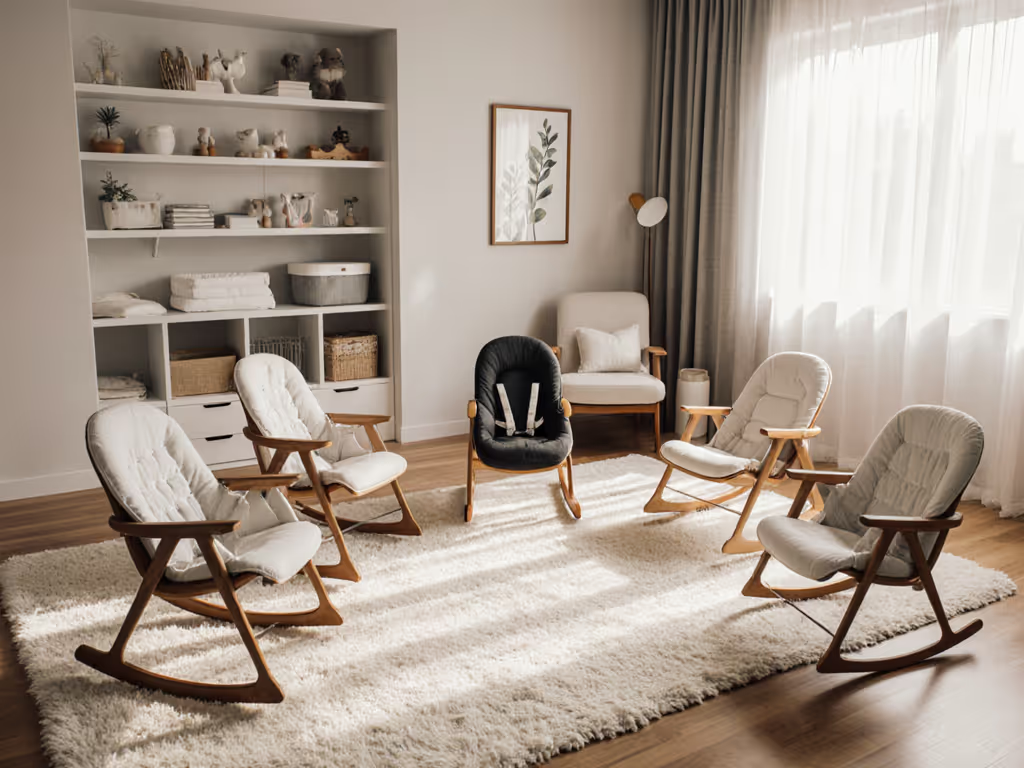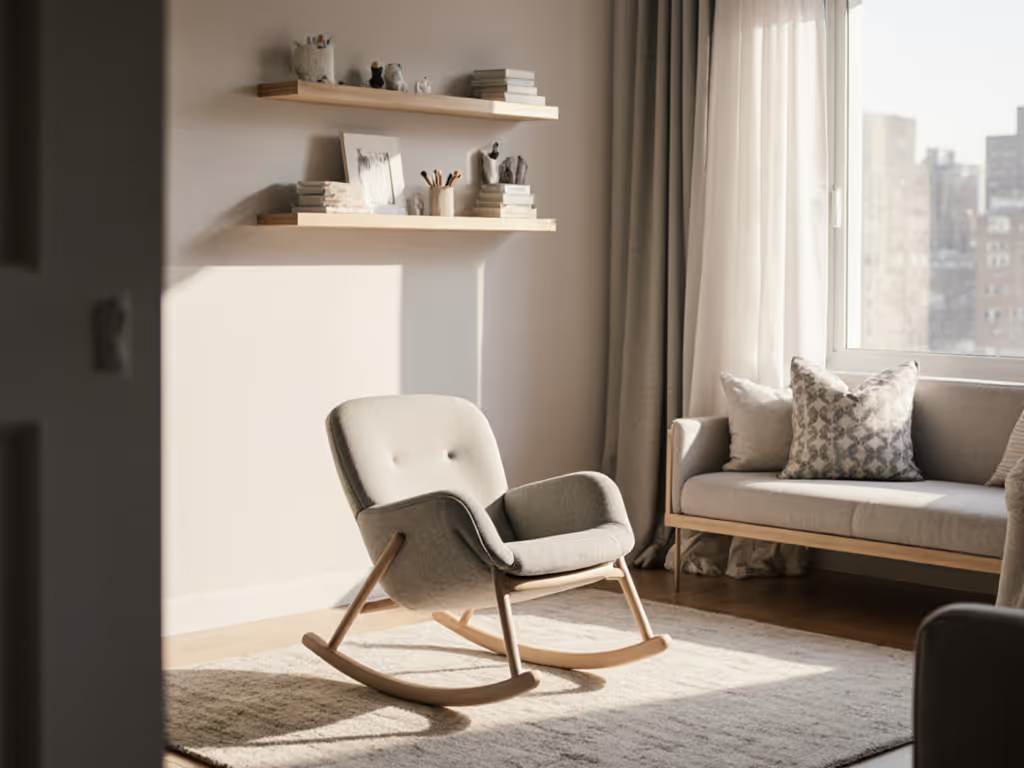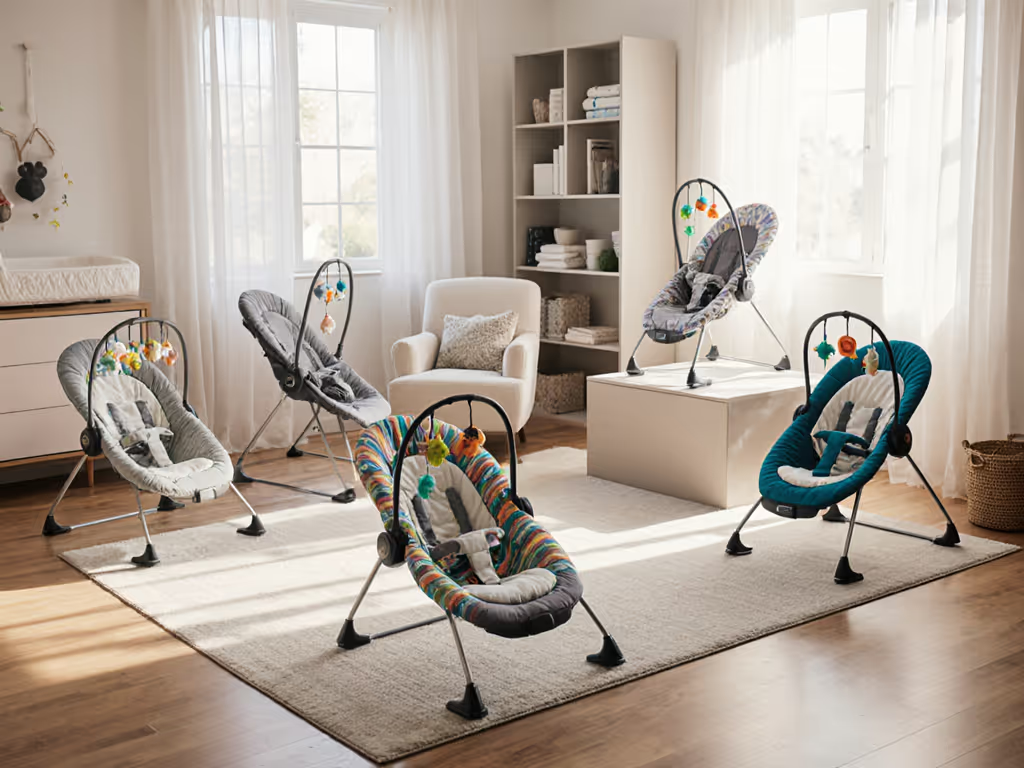
Baby Bouncer vs Rocker: Complete Parent Guide
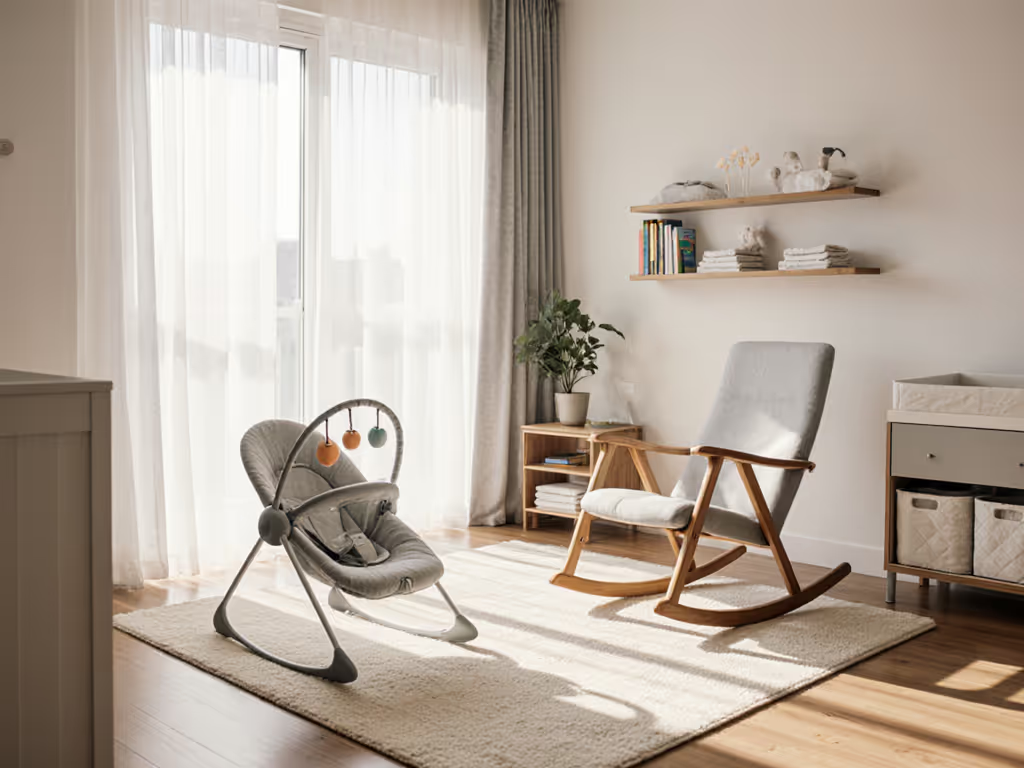
Over 90 percent of new parents turn to baby bouncers or rockers to help soothe and comfort their infants, yet many feel unsure about which type truly fits their baby’s needs. The early months with a newborn can leave you searching for the right balance of safety, comfort, and convenience at home. Understanding the key differences between bouncers and rockers clears the confusion, helping parents choose a solution that supports both daily routines and your baby’s development.
Key Takeaways
| Point | Details |
|---|---|
| Understanding Differences | Baby bouncers and rockers serve distinct purposes; bouncers are passive and allow infants to initiate movement, while rockers provide active, motorized motion. |
| Safety Considerations | Parents should prioritize products that meet CPSC safety standards, ensuring proper restraint and structural integrity for both bouncers and rockers. |
| Space Efficiency | Bouncers are generally more space-efficient and portable, ideal for smaller homes, whereas rockers may offer more features but require more space for storage and cleaning. |
| Decision-Making Criteria | Evaluate your infant's needs, living space, budget, and cleaning preferences when choosing between a bouncer and a rocker, as no single option fits all families. |
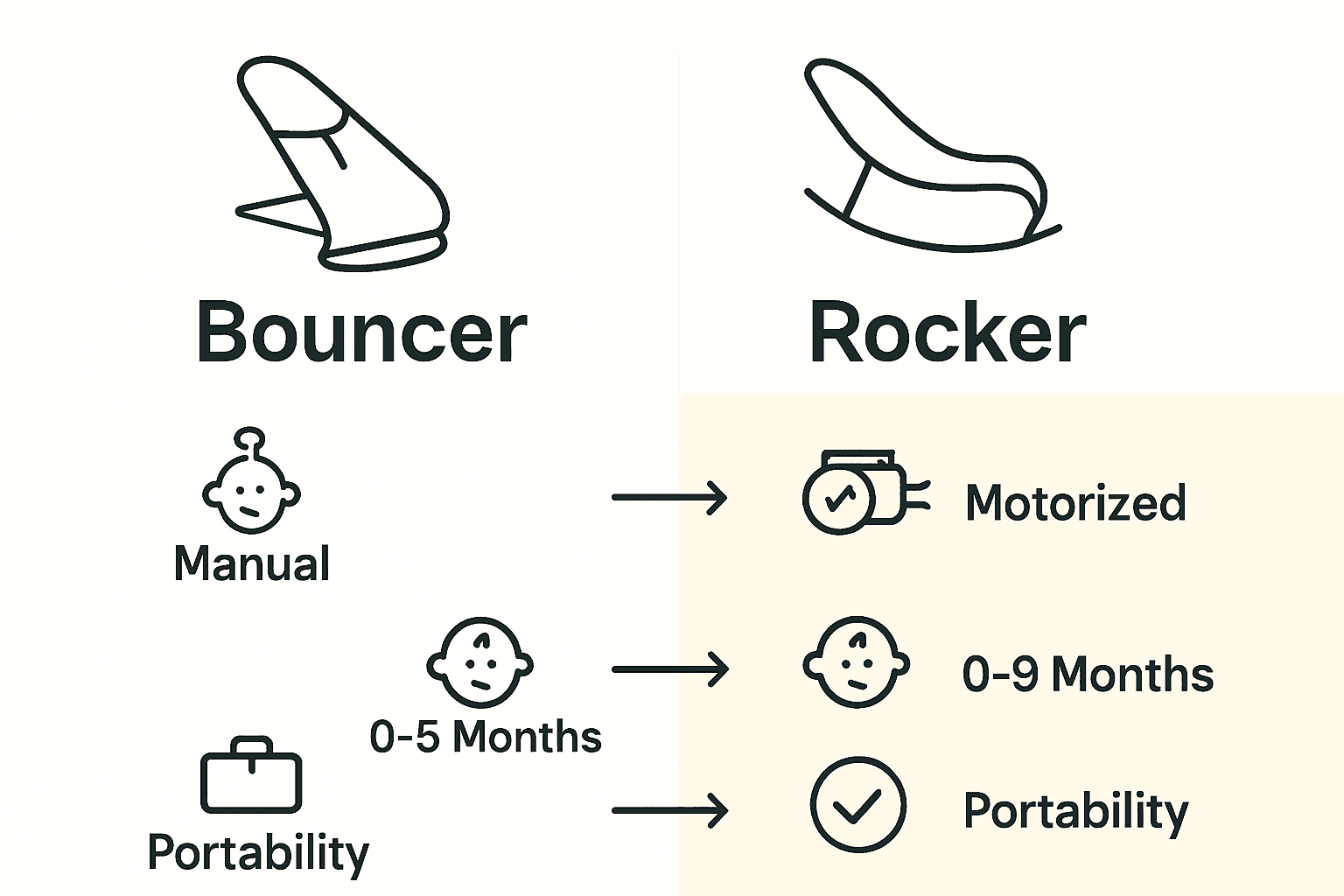 |
|
Defining Baby Bouncers and Rockers
Baby bouncers and rockers are essential infant seating devices designed to provide comfort, support, and soothing motion for babies during their first months of life. While they might seem similar at first glance, these products have distinct characteristics that set them apart and serve different purposes in a baby's daily routine.
A baby bouncer is a lightweight, portable seat that supports an infant in a reclined position. According to the Consumer Product Safety Commission (CPSC), these seats are specifically intended for infants from birth to approximately 6 months old who cannot sit unassisted. Bouncers typically feature a flexible frame that allows gentle bouncing movements, either through the baby's own motion or with assistance from a caregiver. These seats often come with simple designs focused on providing a safe, comfortable resting space for newborns.
In contrast, an infant rocker is a more dynamic seating option that moves its entire structure to create a rocking motion. As defined by the CPSC, rockers are reclined seating products that move forward and backward, usually mounted on curved legs. Modern rockers often include advanced features like:
- Motorized rocking functions
- Vibration settings
- Built-in sound systems
- Battery or electrical cord power options
While both bouncers and rockers serve the fundamental purpose of providing a safe, comfortable space for infants, they differ in design, functionality, and the type of motion they provide. Bouncers are typically more stationary and lightweight, ideal for short-term sitting and gentle bouncing. Rockers offer more consistent, powered movement and often include additional sensory features to help soothe and entertain babies.
Parents should carefully consider their specific needs, living space, and infant's preferences when choosing between a bouncer and a rocker. Factors like portability, power source, additional features, and safety ratings will help guide this important decision for your little one's comfort and development.
Key Differences in Design and Motion
Design and motion are the critical distinguishing factors between baby bouncers and rockers, creating unique experiences for infants and parents alike. While both serve the fundamental purpose of providing a safe, comfortable seating solution, their mechanical approaches and functional characteristics vary significantly.
Baby bouncers are engineered with a lightweight, flexible frame that responds to the infant's natural movements. Consumer Reports highlights that these devices are typically manual, allowing babies to initiate bouncing through their own subtle motions. The design focuses on creating a responsive, low-energy movement that mimics the gentle jostling a parent might provide. Key design elements include:
- Lightweight, portable frame
- Flexible support structure
- Manual movement mechanism
- Minimal power requirements
- Adaptable to infant's natural motion
In contrast, infant rockers represent a more structured approach to infant movement. The Consumer Product Safety Commission defines rockers as products that move their entire structure in a consistent forward and backward motion. Unlike bouncers, rockers often incorporate powered mechanisms to create a predictable, controlled rocking experience. Modern rockers frequently include advanced technological features such as motorized rocking, vibration settings, and integrated sound systems that can be powered by batteries or electrical connections.
The fundamental difference lies in motion generation and control. Bouncers are essentially passive devices that amplify an infant's natural movements, while rockers are active devices that create deliberate, consistent motion independent of the baby's actions. This distinction impacts not just the physical experience for the infant, but also the energy requirements, complexity of design, and overall sensory stimulation provided by each product.

Parents should consider their specific needs when selecting between these options. Factors like home space, budget, infant temperament, and desired level of technological integration will ultimately guide the decision between a responsive bouncer and a more mechanically sophisticated rocker.
Safety Standards and Age Suitability
Safety is paramount when selecting infant seating products like bouncers and rockers. The U.S. Consumer Product Safety Commission (CPSC) has developed comprehensive guidelines to protect infants during their most vulnerable developmental stages, establishing clear standards for design, structural integrity, and age-appropriate use.
For baby bouncers, the CPSC has implemented the voluntary standard ASTM F2167-15, which addresses critical safety concerns. These standards focus on preventing potential hazards such as:
- Falls from elevated surfaces
- Stability issues
- Improper toy bar attachments
- Structural integrity of the seat
Bouncers are specifically designed for infants from birth to approximately 6 months old who cannot sit unassisted. This age range is crucial because babies in this developmental stage lack the muscle strength and coordination to support themselves, making proper restraint and support systems essential.
Infant rockers have similarly rigorous safety regulations. The CPSC has proposed detailed safety standards that extend beyond bouncers, covering products intended for infants and toddlers up to 2.5 years old. These standards meticulously examine:
- Structural stability
- Effectiveness of restraint systems
- Weight distribution
- Material durability
- Potential pinch points and sharp edges
Parents should always prioritize products that meet or exceed these safety standards. This means carefully checking for certification labels, understanding weight and age recommendations, and never leaving an infant unattended in a bouncer or rocker. Always use the provided safety harness, place the seat on a flat, stable surface, and discontinue use once the child shows signs of being able to sit up, roll over, or appears close to exceeding the weight limit.
Remember, while safety standards provide crucial guidelines, they are not a substitute for active parental supervision. Each infant develops differently, so it's essential to regularly assess your child's comfort, mobility, and interaction with these seating devices.
Space-Efficiency and Cleaning Considerations
For parents navigating limited living spaces, the space-efficiency of baby bouncers and rockers becomes a critical consideration. Modern infant seating solutions are increasingly designed with compact living environments in mind, offering versatile features that balance functionality with minimal spatial footprint.
Baby bouncers excel in space management with their lightweight and typically foldable designs. Consumer Reports highlights the importance of selecting models that can be easily stored when not in use. Key space-efficient characteristics include:
- Slim, streamlined frame
- Ability to fold compactly
- Lightweight construction
- Minimal floor space requirement
- Potential for wall-mounting or vertical storage
Cleaning considerations are equally important for maintaining a hygienic environment for your infant. The Consumer Product Safety Commission emphasizes the significance of removable, washable fabric components. Parents should look for bouncers and rockers with:
- Machine-washable seat covers
- Wipeable surface materials
- Antimicrobial fabric treatments
- Removable padding
- Quick-dry fabric technologies
Infant rockers often present more complex cleaning challenges due to their more intricate mechanical components. While they might have a larger footprint compared to bouncers, many modern designs incorporate innovative storage solutions. Some advanced models feature modular designs that allow partial disassembly for thorough cleaning and compact storage.
Ultimately, the ideal choice depends on your specific living situation, cleaning preferences, and storage capabilities. Consider your home's layout, available storage space, and willingness to maintain the product. A bouncer might be perfect for a small apartment, while a rocker could work better in a home with more flexible space configurations. Always prioritize products that offer a balance between convenience, cleanliness, and your family's unique needs.
Choosing the Right Option for Your Needs
Selecting the perfect infant seating solution requires careful consideration of multiple factors beyond just aesthetics or initial appeal. Parental decision-making involves evaluating your family's unique lifestyle, living space, and your specific infant's developmental needs and preferences.
Consumer Reports recommends a comprehensive approach to selecting between baby bouncers and rockers. Key decision-making criteria include:
- Baby's motion preference
- Available living space
- Cleaning and maintenance requirements
- Budget constraints
- Intended frequency of use
From a practical perspective, baby bouncers are typically ideal for parents who:
- Live in smaller living spaces
- Prefer lightweight, portable solutions
- Want a manual, low-tech seating option
- Need a minimalist approach to infant gear
- Desire a more budget-friendly alternative
Infant rockers are better suited for parents who:
- Have more spacious home environments
- Prefer technologically advanced soothing mechanisms
- Want multiple sensory stimulation features
- Need more consistent motion for infant calming
- Are willing to invest in more complex infant seating
KidsHealth emphasizes the critical importance of safety features during selection. Regardless of your choice, always verify that the product has:
- A wide, stable base
- Secure safety harness
- Washable fabric components
- Compliance with current safety standards
- Appropriate age and weight recommendations
Ultimately, no universal solution exists that works perfectly for every family. Your choice should reflect a thoughtful balance between your infant's comfort, your practical needs, and your family's unique circumstances. Trust your parental instincts, read multiple reviews, and if possible, test the product before making a final decision.
Find the Perfect Infant Seat That Fits Your Home and Lifestyle
Choosing between a baby bouncer and a rocker can feel overwhelming with so many features and safety concerns to consider. This guide highlights the importance of understanding your baby's preferences, your living space, and the features that matter most such as portability, soothing motion, and ease of cleaning. If you need a seating solution that fits small homes and busy routines while keeping your baby safe and comfortable, finding the right fit is key.
Explore expert reviews and detailed comparisons at Bouncer Lab where space-efficient and safe baby bouncers are carefully evaluated. Whether you want a lightweight, manual bouncer or a more advanced rocker with extra soothing functions, our resources help you make informed choices. Take the next step now and visit Bouncer Lab to discover options tailored for your family’s unique needs and create a safe, cozy corner your baby will love.
Frequently Asked Questions
What is the difference between a baby bouncer and a rocker?
Baby bouncers are lightweight seats that allow infants to bounce gently through their own movements, while rockers provide a consistent forward and backward motion often powered by batteries or electrical cords, featuring advanced sensory options.
At what age can a baby use a bouncer or rocker?
Baby bouncers are suitable for infants from birth to approximately 6 months old who cannot sit unassisted. Rockers can accommodate infants and toddlers up to 2.5 years old, depending on specific safety guidelines.
How do safety standards differ between baby bouncers and rockers?
Both products are governed by safety standards established by the U.S. Consumer Product Safety Commission. Bouncers focus on preventing falls and ensuring stability, while rockers have additional concerns like weight distribution and the effectiveness of restraint systems.
How can I choose the right option for my baby?
Consider factors such as your baby's motion preference, available living space, cleaning and maintenance requirements, budget, and how frequently you intend to use the product. Bouncers are better for portability and simplicity, while rockers offer more advanced features and consistent motion.


